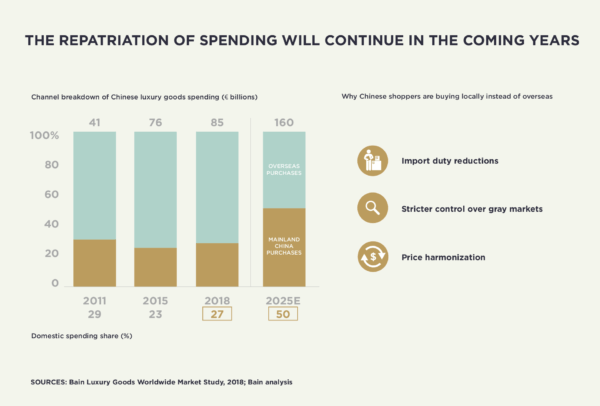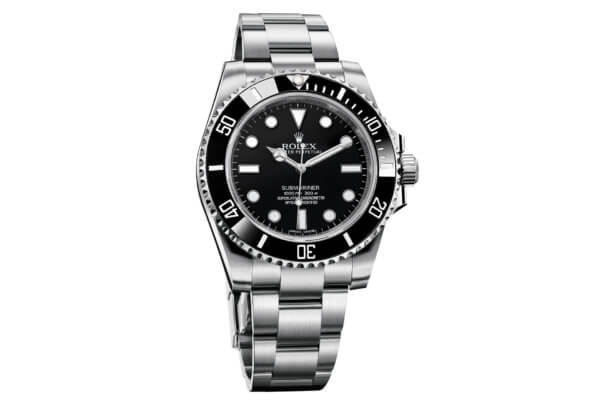For those at the top of society, luxury was widely understood as an expression purely of desire: “I want it so I buy it”. Any increase in the long-term or resale value of an item was a fortuitous consequence. But times have changed, and today’s elites expect their personal possessions to bring not just pleasure but also value. Indeed, the Foundation High Horology’s 2018 Trend Report identified perceived value as an important construct for watch buyers.
Good value is also lasting value. In February, Highsnobiety, one of the most influential websites for the new generation of luxury consumers, released its Beginner’s Guide to Buying Your First Luxury Watch. One of its central premises is the need to be obsessed with the resell of a potential acquisition. This means first “doing your homework” by scouring Fine Watch forums for information, and researching the history and heritage of the brands.
If you've got it, flex it
As wealth grows, ideas about what defines luxury also appear to be evolving. In China, luxury is still considered a synonym for expensive, whereas in France it signifies high quality. An alternative view might be to see luxury as conveying high value, whereby value is defined as the “regard that something is held to deserve; the importance, worth, or usefulness of something” (Oxford University Press). In other words, even a luxury brand must earn its keep, especially in China where, according to Bain & Co, half of Chinese luxury spending will be domestic by 2025.

Flexing has grown in popular culture over the last couple of years. What began as rappers and YouTube influencers showing off their wealth has become more mainstream, whether it’s about flexing abs, money or watches. Value changes, and Fine Watch brands need to keep up with trends. Roy Tong is the co-founder in Singapore of Acquired Time, the “first luxury watch subscription and rental service”. He initially thought that his clients would be “fresh graduates in their 20s and 30s who were purchasing their first watch but (…) soon discovered that the bulk of [his] clients is made of senior professionals who already have a watch, and often more than one.” Proof that wearing a beautiful timepiece isn’t a matter of age but perceived value and experience.
What consumers value today
In the battle for shoppers’ hearts and minds, brands are learning new ways to build additional value into their products and services so they can justify and, more importantly, maintain their premium ticket price. The global research agency, Kadence International, conducted a survey in 2018 of what lends a brand its high value status. They found that those with an awareness and appreciation of their own heritage scored higher on their luxury index than others without.
But does this apply to every demographic? When Luxury Institute investigated trends among the millennial and Generation X age groups, it found the opposite was true. According to findings, “brand heritage and history now rank sixth to superior quality, superior customer service, superior design, superior craftsmanship, and exclusive products.” Know your audience is a lesson that never gets old.
One thing does remain consistently true for all types of buyer, and that is expectations of authenticity. For a Fine Watch brand, this means, for example, drawing attention to the craftsmanship and skills that go into each timepiece. Or as Alex Field, director of marketing at Reignwood, the Asian investment group behind some of the UK’s more exclusive members clubs, says: “If you’re not authentic, [consumers] will see straight through you in seconds, especially when you’re charging the prices that sometimes we charge.”
https://www.marketingweek.com/2018/05/22/evolving-concept-luxury/
Creative initiatives around value
Fine Watchmakers have taken onboard the large fashion houses’ rethinking of the creative process. Rather than attempt to reinvent the core brand, ideas from the archives can prove more effective. They offer enthusiasts a more familiar connection than would a new identity, which can take time to gain traction and risks diluting core values. Like Rolex or Patek Philippe, a number of other Fine Watch brands have learnt the value of doubling down on their core credentials as part of their product range. Think Panerai dive watches or Bell & Ross pilot watches. Partnerships between complementary brands also continue to lift the value of the end product. Puma recently announced strong growth based on demand for its RS-X shoes and Cali sneakers, to which singer Selena Gomez lent her brand power. Fine Watchmaking has its own examples, such as Jaeger-LeCoultre’s Reverso 85th anniversary collaboration with shoe designer Christian Louboutin.
https://www.forbes.com/sites/njgoldston/2018/12/31/what-you-need-to-know-about-changing-luxury-consumer-trends-for-2019/#fa76f305e9d4

Pricing, opinion and experience
The selling price of an item is, of course, the most common indication of its value. But the expansion of online sales is causing headaches in the luxury market, as buying across markets and currencies is making it harder to control fluctuations in price. Enthusiasts are also turning to the Internet to gauge which brands are likely to be a good investment. Articles such as Squaremile’s “Twelve investment watches for 2018” are no doubt having an effect on consumer perception.
This digital space is forcing brands to develop clear price frameworks and also offer storytelling, personalization and advice which convey the superior worth of their products. With physical locations shrinking in number, the store itself has to change too, providing not just products but experiences and discovery. Online and offline must work together to build the value which maintains an aura of desirability long after the purchase has been made.












